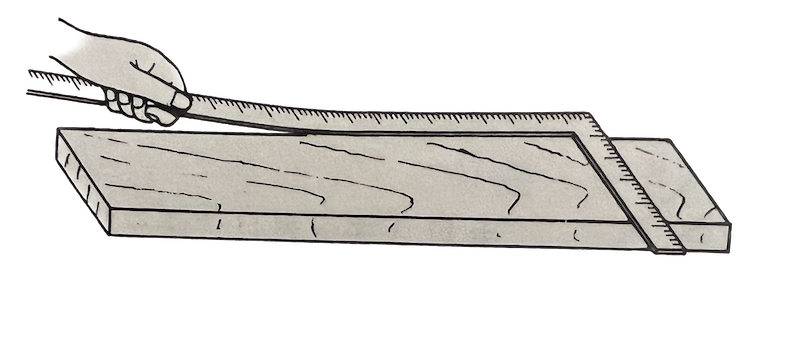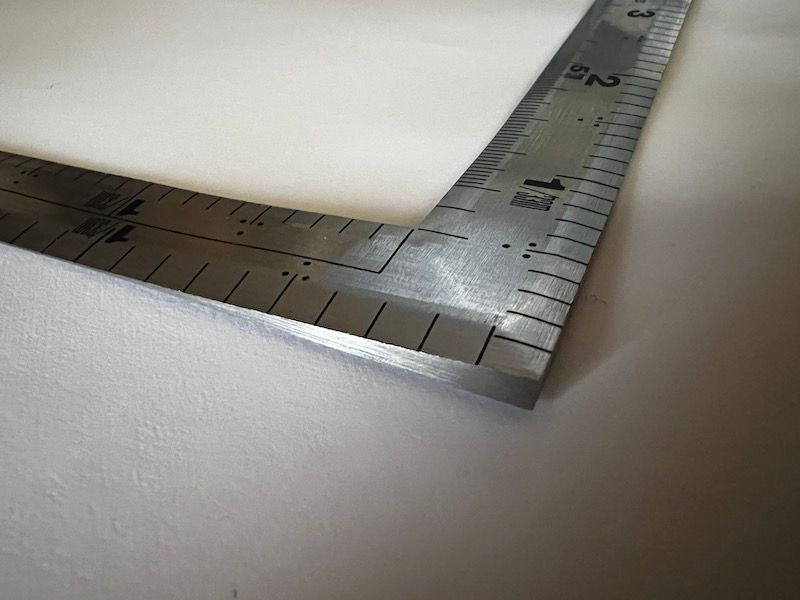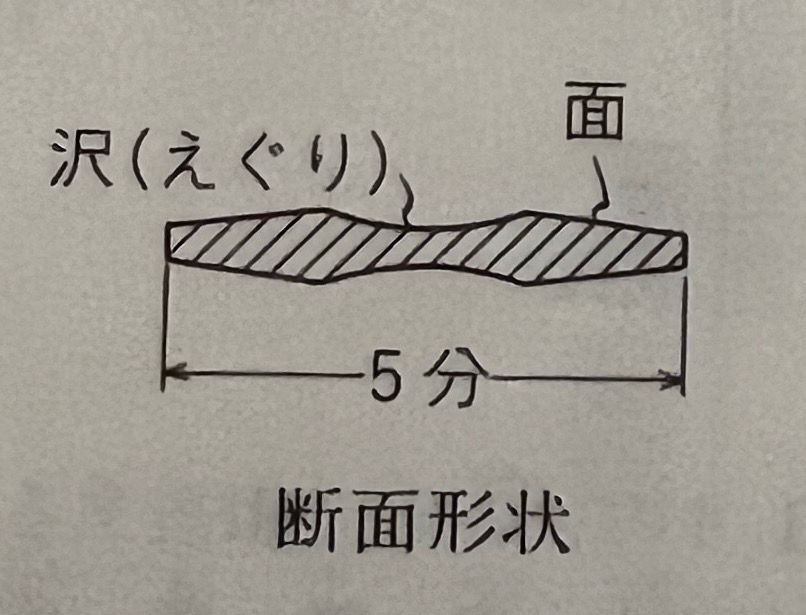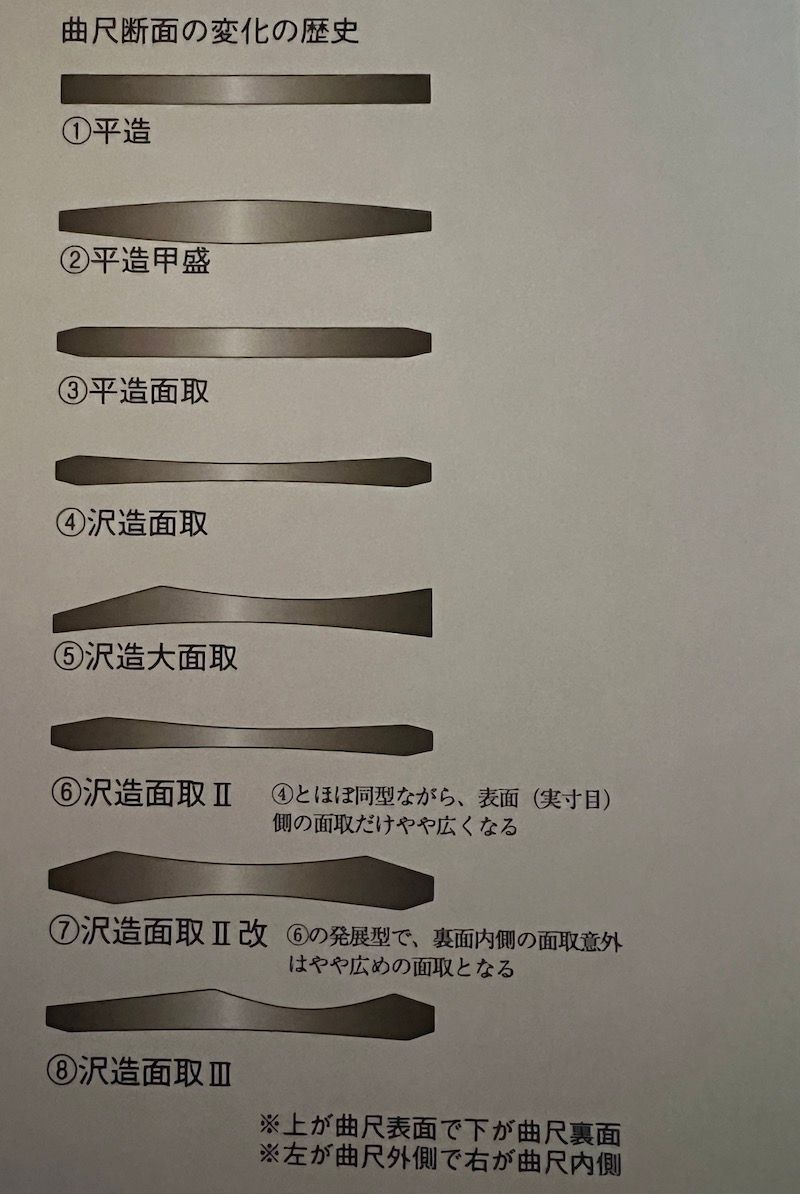Sashigane — physical design
Physical characteristics of the sashigane. Part 3 in a series.
This is part three in a series of posts:
- Sashigane 1: Introduction
- Sashigane 2: Traditional Units
- Sashigane 3: Physical design (this post)
- Sashigane 4: Hyoume and Urame
- Sashigane 5: Kou, ko, gen
- Sashigane 6: Simple usage
- Sashigane 7: Right triangle magic
Physical design
A sashigane is constructed as a single piece of forged metal, but measurements are made with five different parts:
The long arm or nagate (長手 ). The nagate is typically around 1尺5寸 (454.5mm or about 1 1/2 feet long).
The short arm or tsumate (妻手 , which means “wife’s hand”). The tsumate is typically 7寸 long (212.1mm or a little more than 8”).
The kanete (矩手 ), the actual right-angle in the corner to check for square.
The men or faces (面 ) with the ruled graduations. Note that the top and bottom faces are marked differently (and sometimes the inside and outside edges are also marked with different units).
The sawa or width of an arm (沢 ). The width of an arm is also used for measuring and spacing. Each arm is exactly 5 分 wide. The kanji character means “valley” or “mountain stream” and refers to the hollow on each side (see diagram below).
The sashigane has several design characteristics that aren’t immediately obvious.
First is that it’s intentionally flexible. It’s normally held with the long arm in the left hand, with your hand positioned a fair distance from the short arm:

Bending the long arm this way makes it easy to register along the edge of a board you are marking. You want to grab the end of the long arm, rather than up close to the tsumate to give as much registration surface as possible for accuracy (and to make the bending easy). If you grab it up close, it’s harder to keep it square.
The corner, or kanete (矩手) is thicker than the rest of the tool to ensure it remains square:

Each arm is exactly 5分 or very nearly 15mm wide (a little more than 1/2”). The cross section is intentionally designed to raise the edges above the surface of the material being measured. This gap above the surface prevents the ink from smearing when striking a line:

Even the little hollow (marked 「えぐり」 in the diagram) is cleverly designed: in addition to providing a comfortable spot for your thumb and fingers to grasp the tool, you can feel when the two edges along the sides of the arc register flat on the surface (line contact provides better tactile feedback than area contact would). Modern sashigane most commonly just bevel the edges and leave the center flat, but old ones came in many different shapes:

The next post in this series discusses exactly how and why the scale on the bottom of the traditional sashigane uses a different scale on the bottom side.